Crisp and buttery, these traditional Butter Cookies add a whimsical touch to any occasion. In this recipe, I recreated the famous dove-shaped Hato Sabure cookies from Kamakura, Japan (dove pattern included). Only 5 ingredients needed!
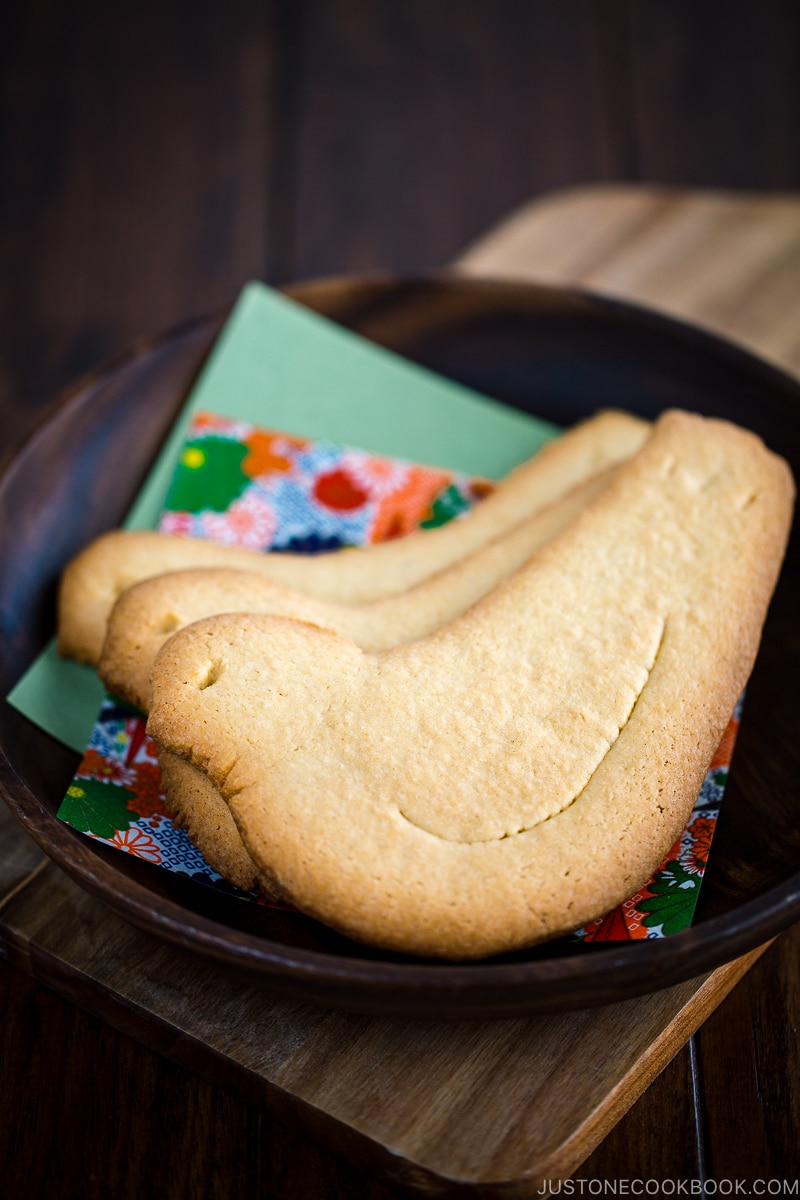
Since moving from Yokohama to the Bay Area when I was 20 years old, I get a craving for the snacks I grew up with once in a while. Whenever my mom comes to visit me, I ask her to bring my favorite Butter Cookies called Hato Sabure (鳩サブレー) from the popular confectionery store Toshimaya.
What’s Hato Sabure?
Hato Sabure (鳩サブレー) is a brand of butter cookies sold at Toshimaya in Kamakura (鎌倉) near Yokohama.
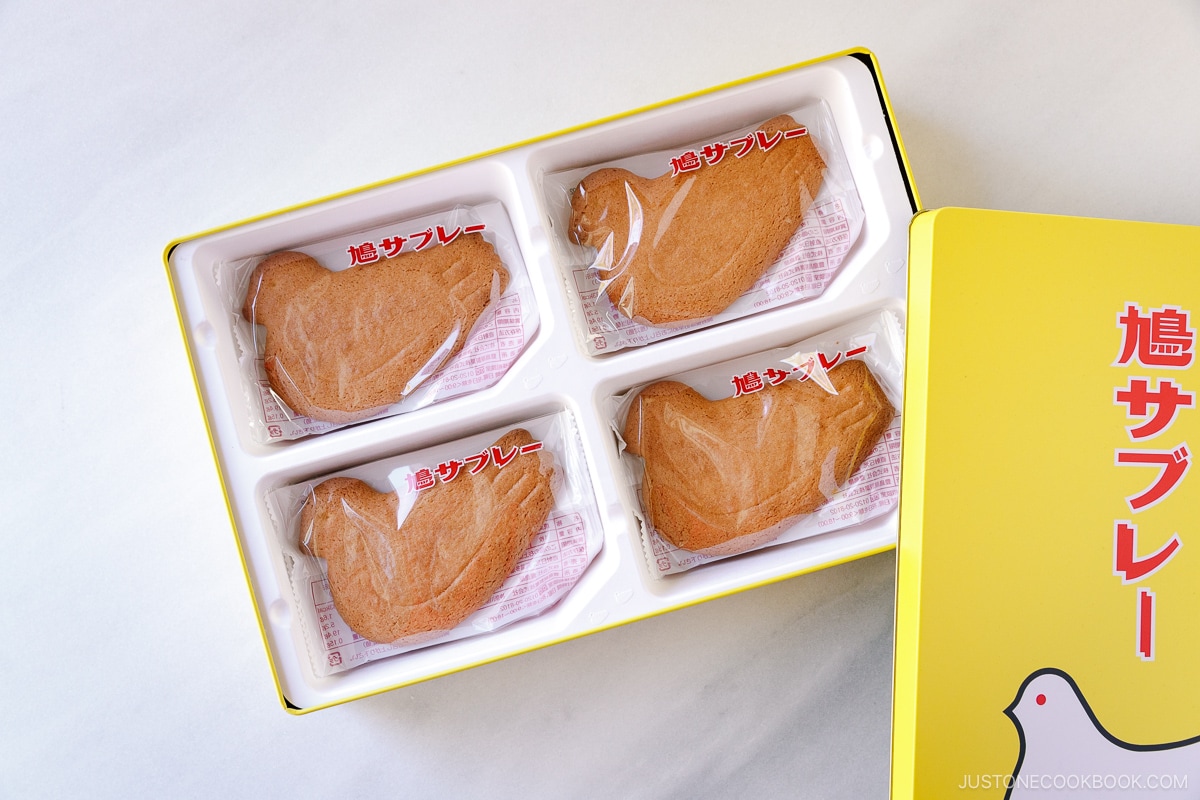
These sablé cookies go all the way back to 1887 (during the Meiji Era). Around that time, Japan started to open itself up to the world, allowing many foreign goods to come into the country.
One day a foreigner visited this shop and gave the founder of the store a biscuit. That was the first time he tasted a Western cookie, and he was immediately intrigued to make them. However, butter wasn’t a common ingredient in Japanese food at that time so he had to look for butter in neighborhoods where Westerners lived. Since then he tested and created this version – that’s Hato Sabure.
Why Dove-Shaped?
You may wonder why these famous Japanese butter cookies have a dove shape. The name “Hato Sabure” means dove sablé; Hato (鳩) is a dove in Japanese, and sabure (サブレー) is the Japanese spelling for sablé.
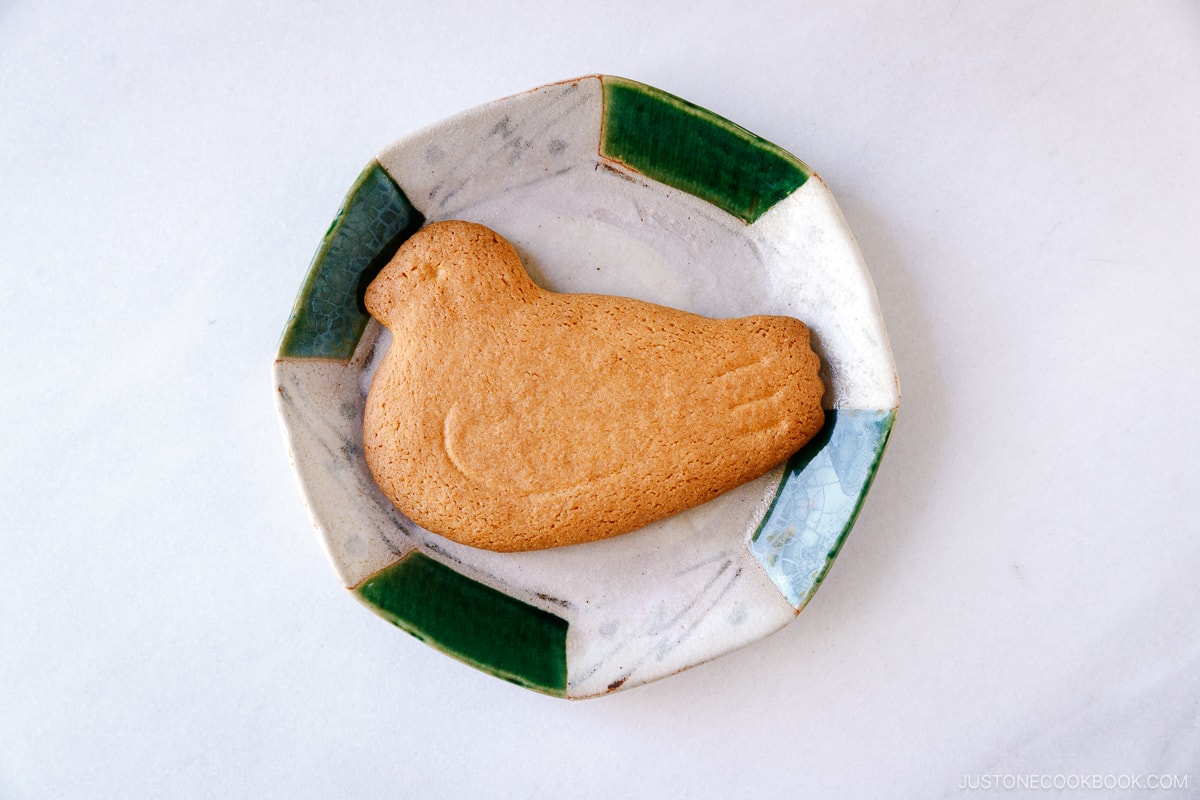
This famous confectionery store is very close to Tsurugaoka Hachiman-gu shrine (鶴岡八幡宮), where the founder often went to pray. He was inspired to make dove-shaped cookies because children at the shrine adored doves. Also, the shrine’s name contains Japanese character number eight “八” which resembles the shape of two birds facing each other (more in Japanese here).
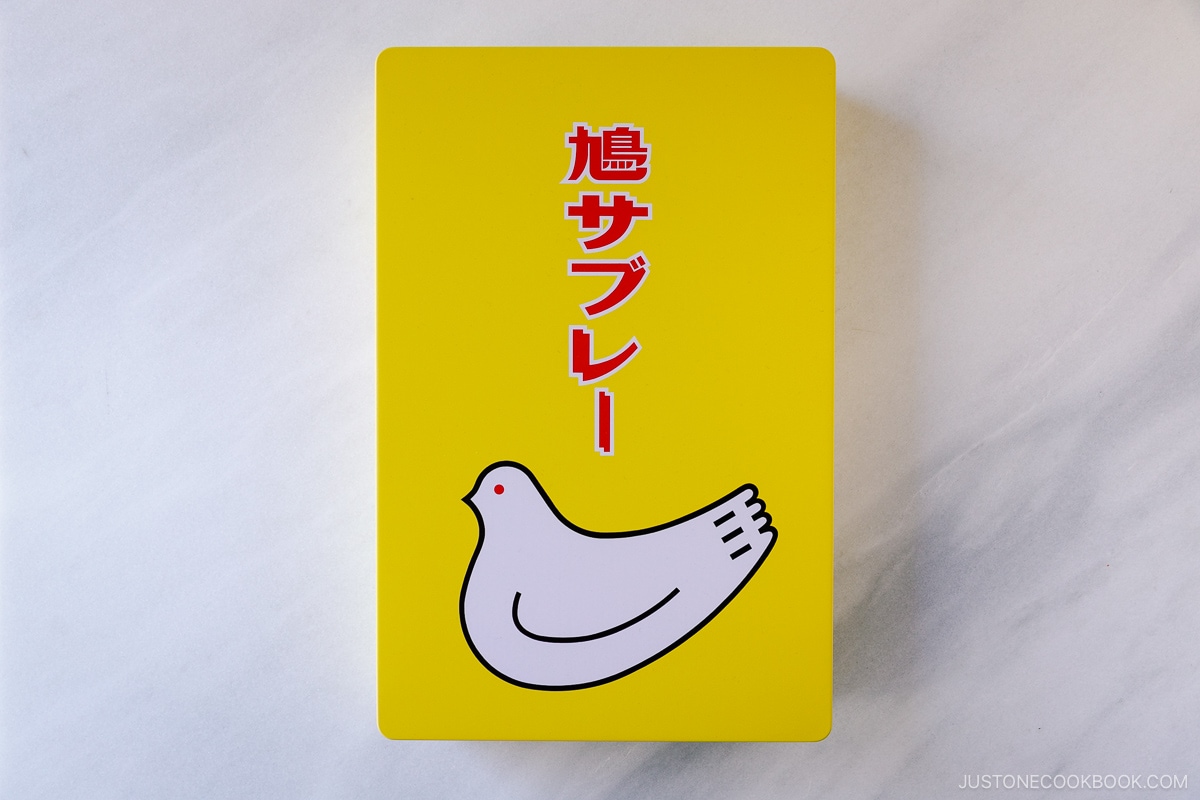
Making Copycat Hato Sabure
I was inspired by a Japanese blog (unfortunately, the website no longer exists) where the blogger dedicates his time to making the perfect Hato Sabure! After reading his blog and comparing it with sable cookie recipes online, I came up with this simplified recipe that works very well, which I will share today.
This butter cookie recipe is made with only 5 ingredients:
- All-purpose flour
- Sugar
- Unsalted butter
- Egg
- Baking powder
You can add vanilla extract if you like, but the original recipe didn’t include it.
Downloadable Dove-Shaped Pattern
I also made the dove pattern with parchment paper (you can download and print out here). I was extremely happy that they tasted and looked just like the Hato Sabure I love!
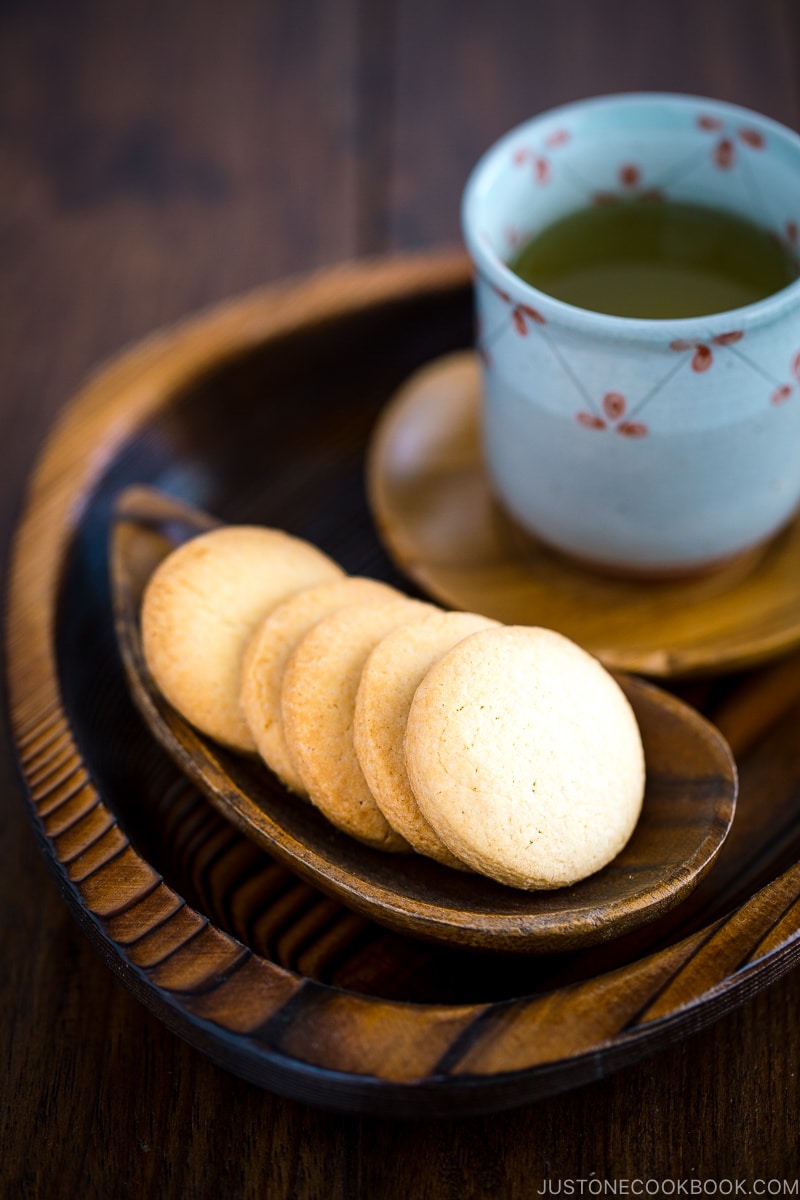
These Butter Cookies are:
- Super buttery, yet light
- Crisp on the edges
- Quick– only 30 minutes of chill time
- Can be rolled into a log shape and sliced, or cut out with cookie cutters
- Versatile – dip in melted chocolate or matcha chocolate and/or sprinkles
They are delicious, and it’s fun to make especially with your kids who can help cut out the dough with cookie cutters. Enjoy!
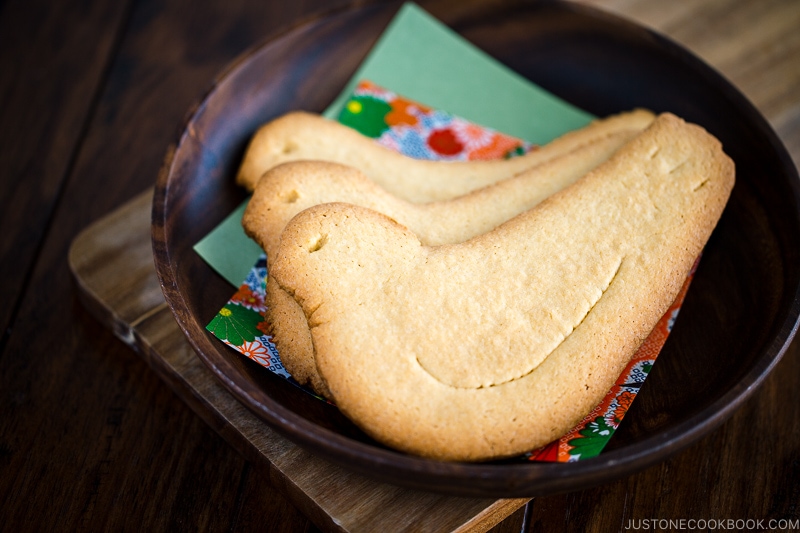
Wish to learn more about Japanese cooking? Sign up for our free newsletter to receive cooking tips & recipe updates! And stay in touch with me on Facebook, Pinterest, YouTube, and Instagram.
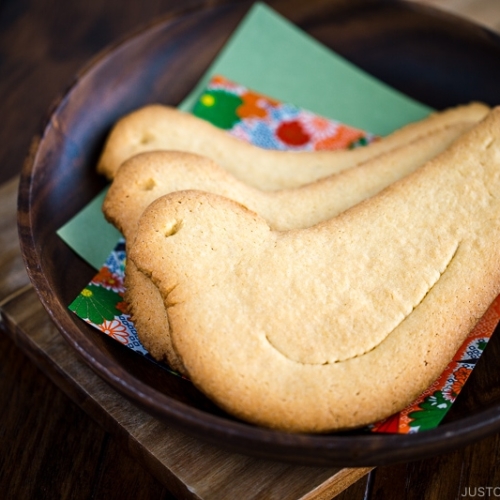
Butter Cookies (Homemade Hato Sabure)
Ingredients
- 1⅔ cups all-purpose flour (plain flour) (weigh your flour or use the “fluff and sprinkle“ method and level it off)
- ½ cup sugar
- 6–8 Tbsp unsalted butter (at room temperature; use more butter for an extra buttery taste)
- 1 large egg (50 g each w/o shell) (at room temperature; beaten)
- 1 tsp baking powder
- ½ tsp pure vanilla extract (optional; I did not add since the original Hato Sabure does not include it)
Instructions
- Gather all the ingredients. Sift 1⅔ cups all-purpose flour (plain flour). I highly encourage you to weigh your ingredients using a kitchen scale for this recipe. Click on the “Metric" button at the top of the recipe to convert the ingredient measurements to metric. If you‘re using a cup measurement, please follow the “fluff and sprinkle“ method: Fluff your flour with a spoon, sprinkle the flour into your measuring cup, and level it off. Otherwise, you may scoop more flour than you need.If you want to make dove-shaped Hato Sabure cookies, print out the image and trace the pattern on parchment paper.

- Fit an electric mixer with the whisk attachment and combine ½ cup sugar and 6–8 Tbsp unsalted butter (at room temperature) in the bowl. Whisk on high speed until fluffy, about 2 to 3 minutes.

- Add 1 large egg (50 g each w/o shell) and mix to combine. Optionally, add ½ tsp pure vanilla extract now if you‘re using it.

- Change the whisk to the beater attachment. Add the flour and 1 tsp baking powder and mix on low speed until the flour is incorporated.

- Roll the dough into a ball and wrap it in plastic wrap. Refrigerate for at least 1 hour (or freezer for 15–20 minutes). Tip: Form the dough into logs at this stage if you plan to make slice-and-bake cookies. For how to make cookie dough logs with step-by-step photos, see my recipes for Matcha Cookies and Miso Butter Cookies.

- Preheat the oven to 375°F (190°C). For a convection oven, reduce the cooking temperature by 25ºF (15ºC). After one hour of chilling, roll out the dough on a lightly floured surface, to ¼ inch thickness. Tip: I place long cooking chopsticks (they are about ¼ inch thick) on either side of the dough to use as a guide when rolling. This keeps my dough an even thickness.

- To make dove-shaped cookies, cut the cookie dough around the dove pattern with the tip of a sharp knife. For round cookies, you can use a 2-inch round cookie cutter or a tall glass.

- Use a large spatula to transfer the cookies to a baking sheet lined with parchment paper, about 1 inch (2.5 cm) apart. Use the tip of your knife to add the dove‘s eye and wing details, if you wish. Tip: I highly encourage you to use a light-colored aluminum baking sheet and check your oven‘s temperature with an oven thermometer; see the Notes section below for details.

- Bake until golden brown on the edges, about 15–20 minutes. Remove from oven and let cool completely on a wire rack. Enjoy!

To Store
- These cookies stay fresh in an airtight container at room temperature for up to 1 week. I usually reheat the cookies at 350ºF (180ºC) in the toaster oven (or oven) until crisp.
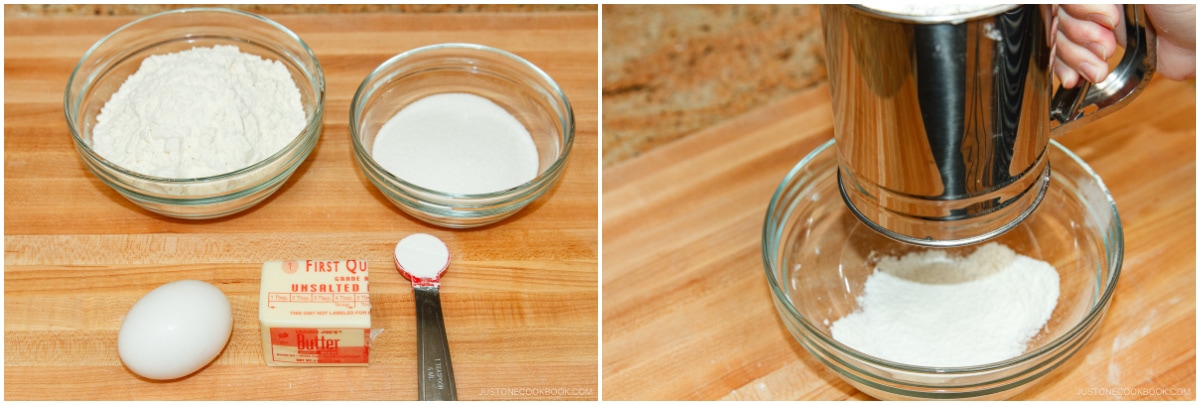
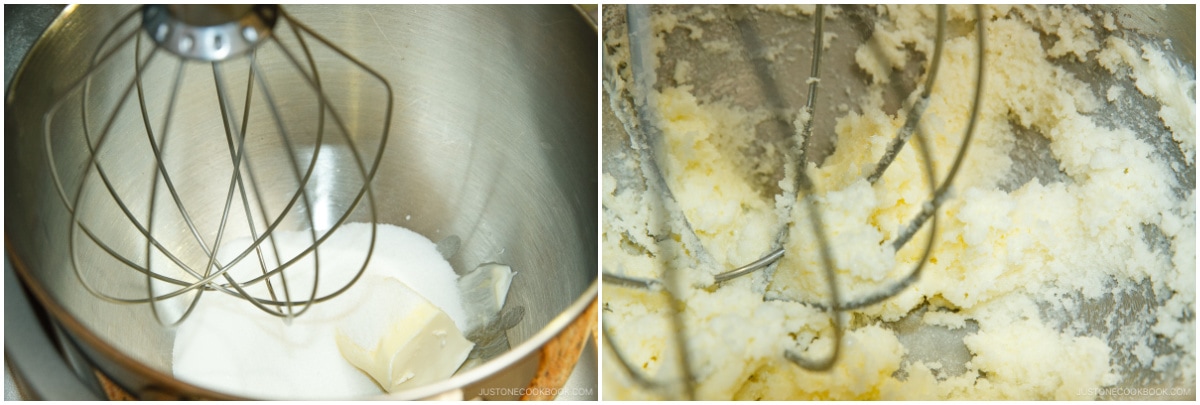
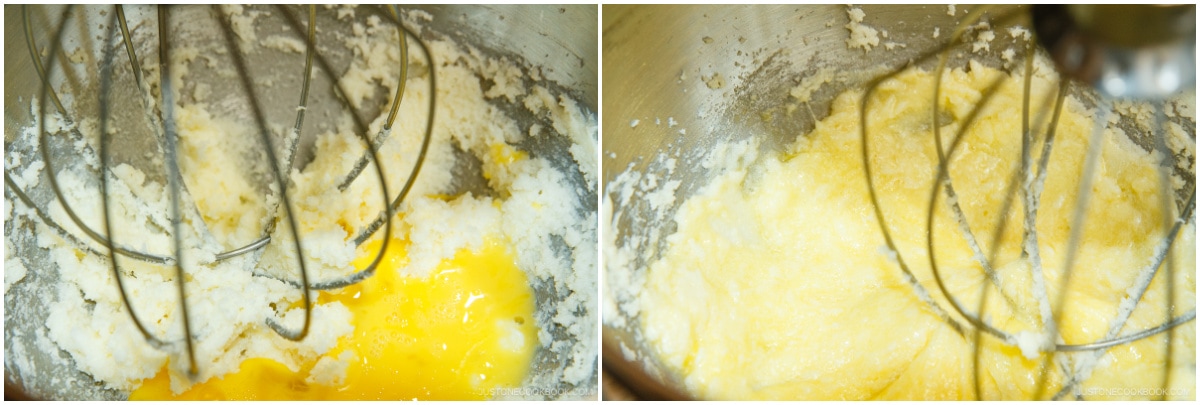
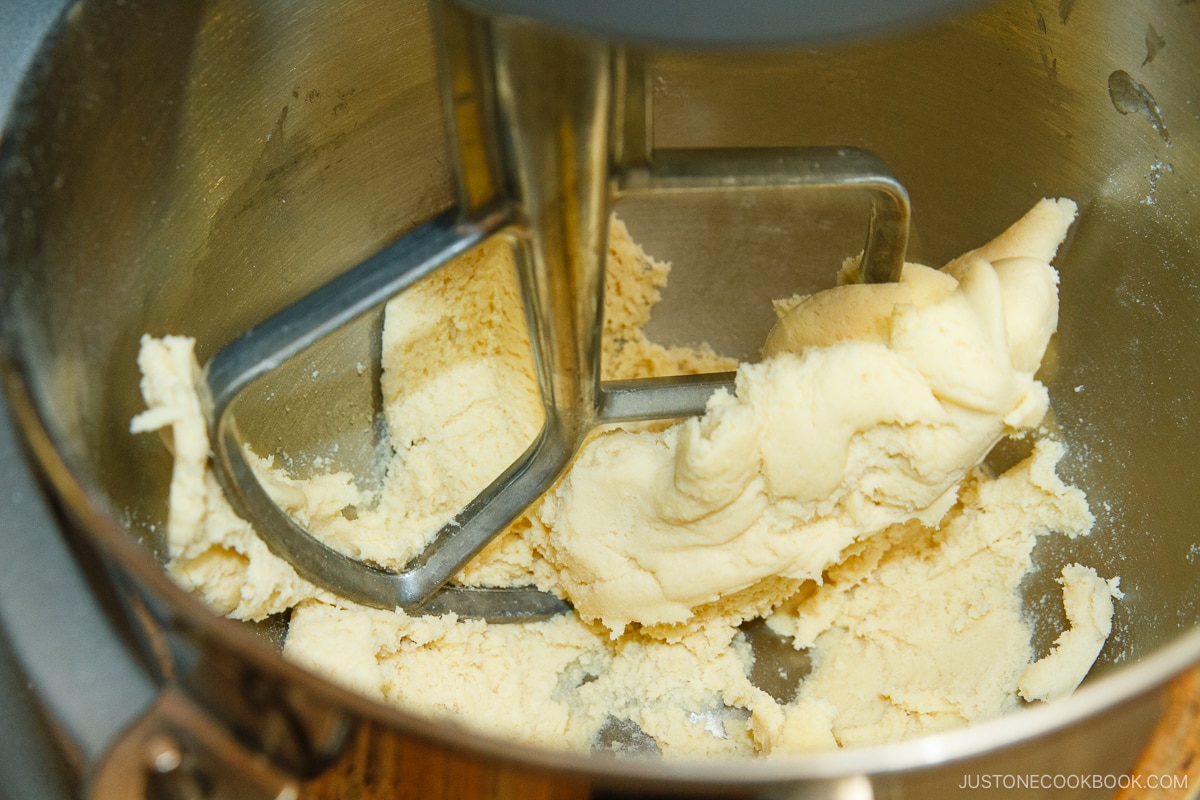
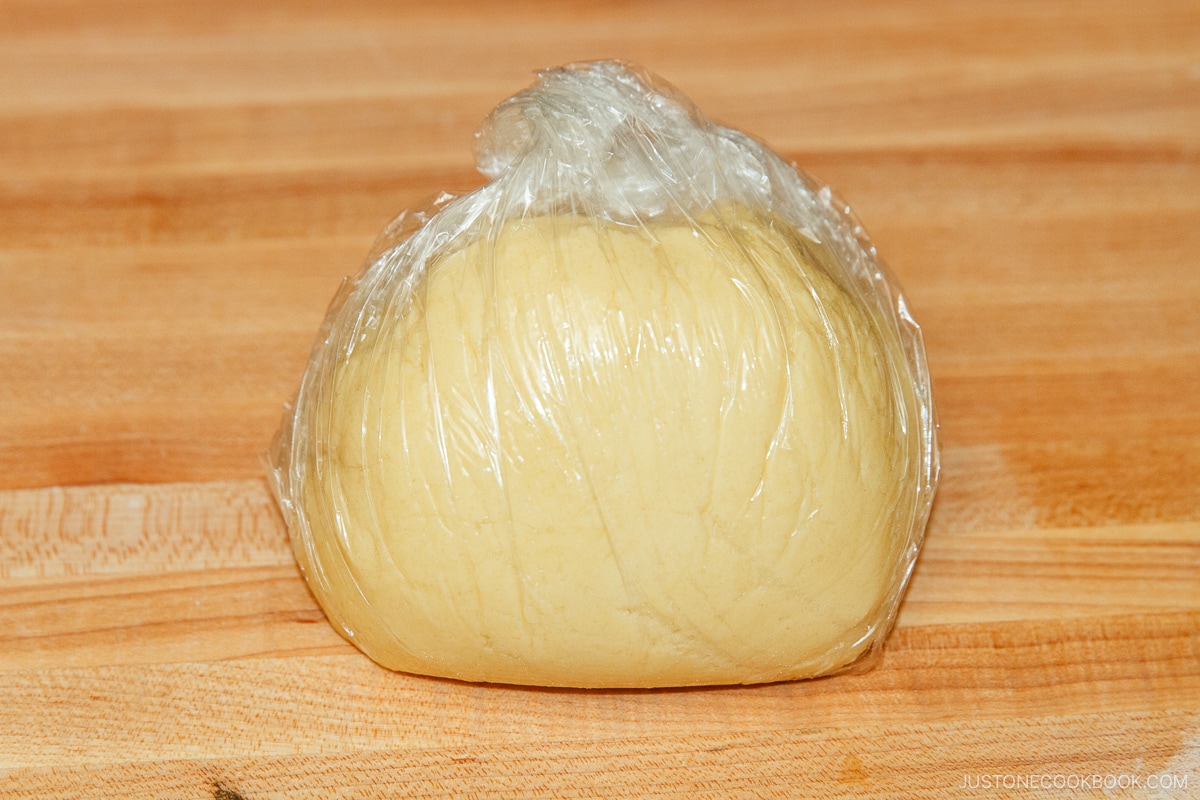
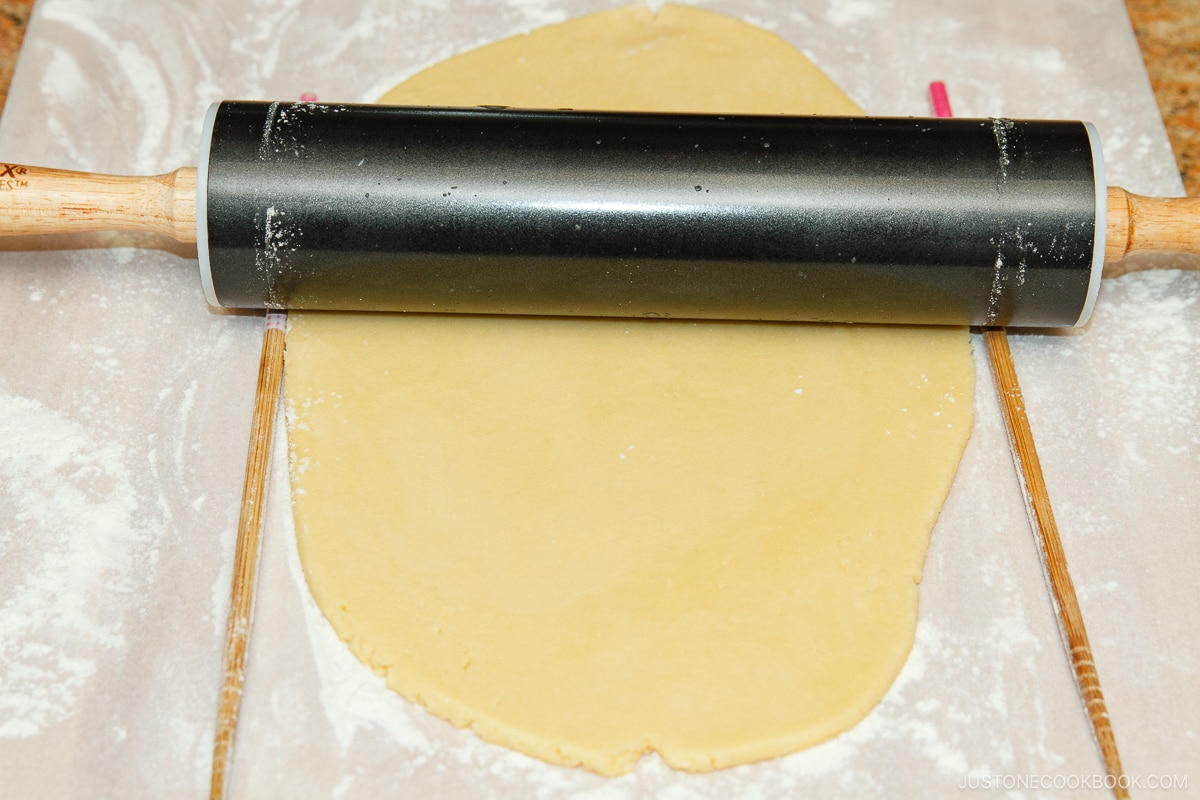
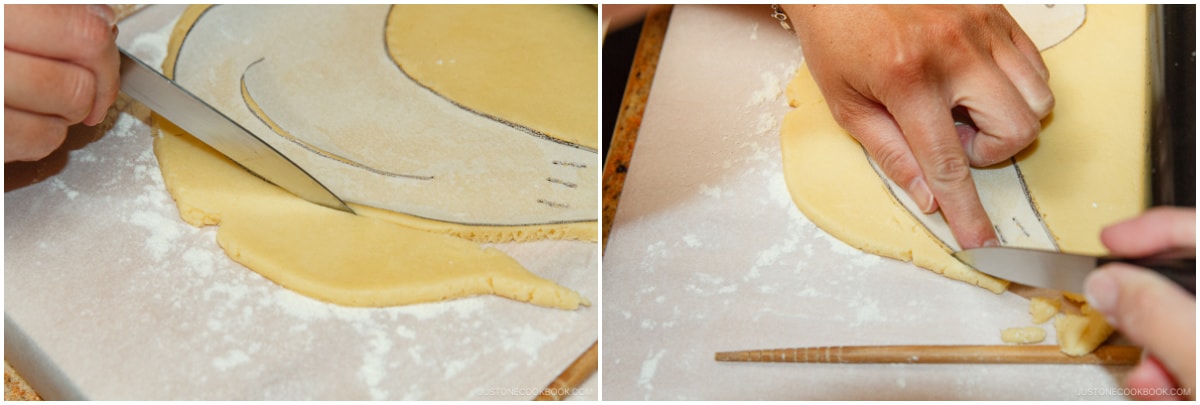
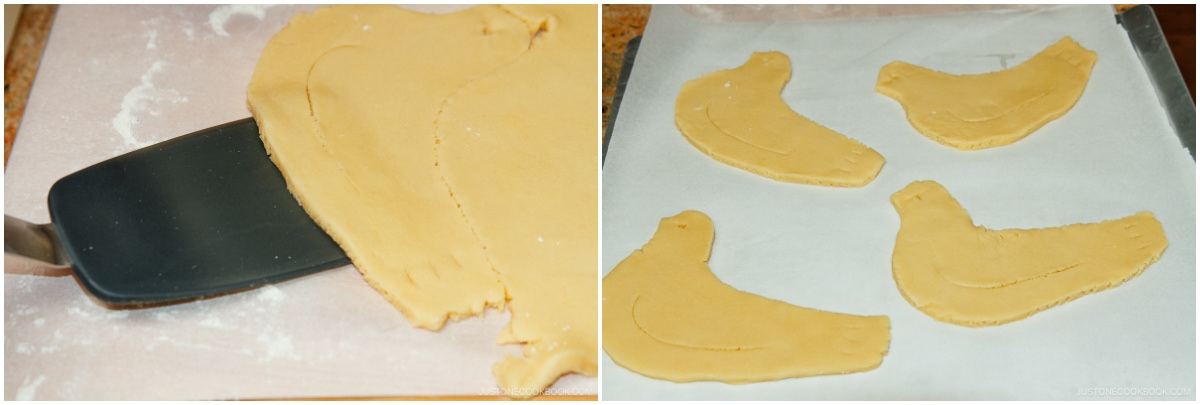
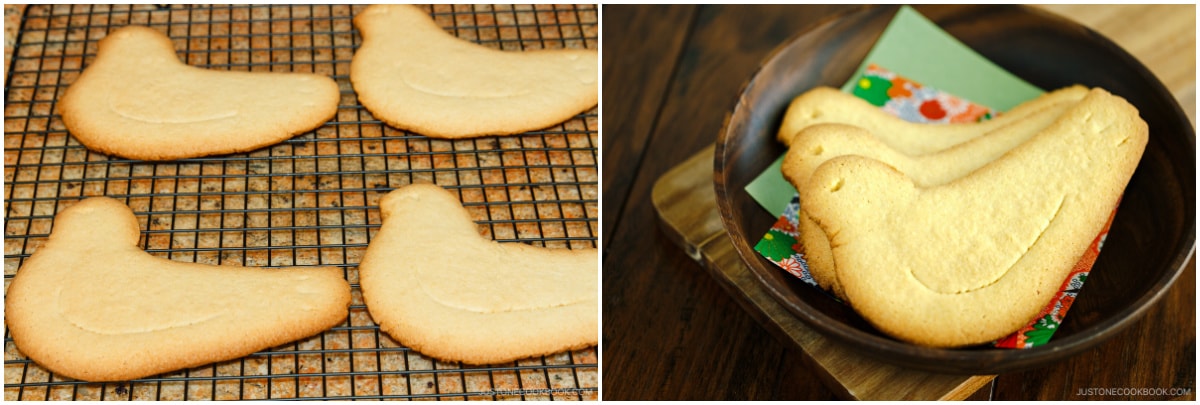

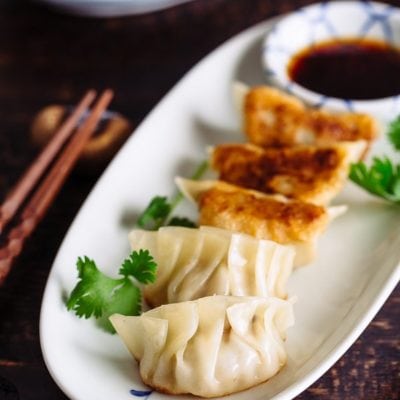
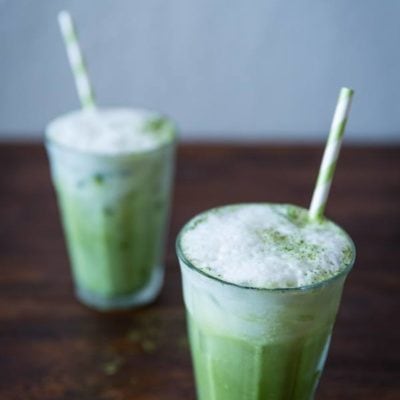
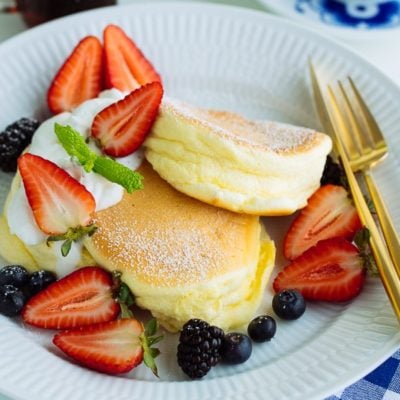
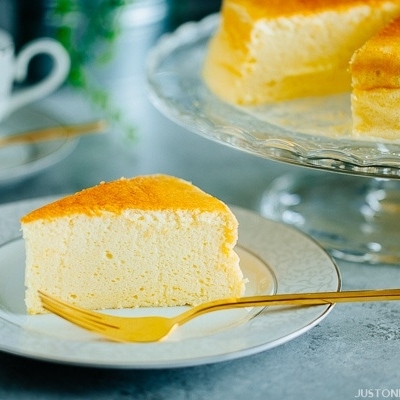
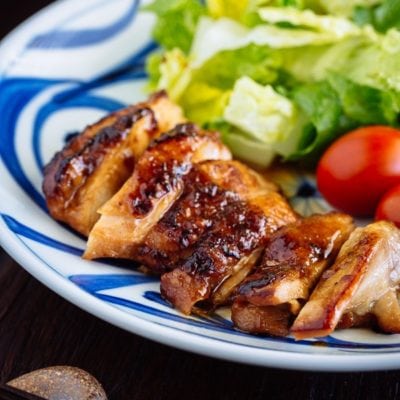
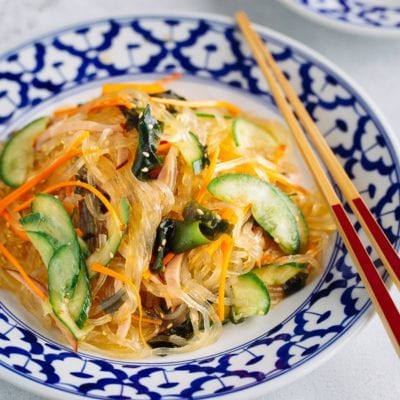

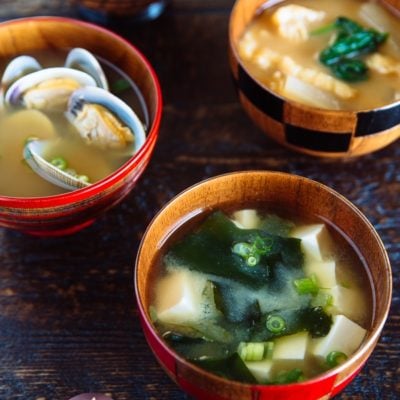


These are the kinds of cookies that you promise yourself that it’s the last one and then end up eating all of them
Hi Maryna!😁 We are glad to hear you enjoyed Nami’s recipe!
Thank you so much for your sweet feedback. Happy Baking!
Hi Nami!
I’ve been visiting my son in Tokyo. While here, I had a lovely lunch at a restaurant that specializes in Yuba with my daughter-in-law’s family. After fantastic lunch, I gave the family gifts was given gifts by the family, one of them was a package of these special cookies! I haven’t tried them yet but I’m excited to share them with my family, I also saw them for sale at a food counter in the Ginza Mitsukoshi department store. I’m delighted to learn more about them and to have a recipe to try after I’ve eaten all the cookies I was given. Thank you for the recipe!
Hello, Caroline! Thank you so much for taking the time to read Nami’s post and share your story.☺️
Wow! You had an amazing trip to Japan! We hope to have recipes for every dish and snack you tried in Japan! Happy Cooking!
I’m looking forward to making these. If I wanted matcha flavor, should I add 1 tablespoon matcha powder? Do you have a recipe for matcha chocolate?
Hi Tammy! Thank you for reading Nami’s post and trying her recipe!
If you are going to add Matcha powder to this recipe, 1-2 Tablespoons of Matcha should work. However, we recommend reducing the same amount of Matcha from flour amount. (take out 1-2 Tablespoons of flour from this recipe)
You might also want to check out Nami’s Matcha cookies recipe.
https://www.justonecookbook.com/green-tea-white-chocolate-cookies/
We hope this helps!
I would like to know can we put royal icing on the cookies to make them sugar cookies? Thank you.
Hi Jas! Thank you for trying Nami’s recipe!
Sure. You can decorate the cookies with royal icing.
Happy Baking!
Thanks for replying. We found it is not as strong as the sugar cookies. What do you recommend for a sugar cookie recipe? We really live your recipes.
Hi Jas! We do not have a sugar cookies recipe at this moment, but if you like you can check out Nami’s buttery sables recipe.
https://www.justonecookbook.com/meyer-lemon-cookies/
We hope you enjoy it.
Hey! So I used almond flour for this recipe and it was super runny. What should I do so that it is the right consistency?
Hi Ellie, How about adding a gluten-free all purpose flour?
We hope this works for you!
Hi there, can I make this into a log and slice them into circles?
Hi Azimah! Thank you very much for trying Nami’s recipe!
Yes, you can. We recommend making it into a log and place in the refrigerator for a few hours before slicing them.
We hope this helps!
so do you refrigerate in a ball in plastic wrap for 30 minutes first, and then make into a log in fridge for another few hours, or do you not need to make the ball first?
Hi Courtney! You do not need to make this into a ball. Instead, you can make it into a log and refrigerate it until it gets east to cut.
We hope this helps!😊
I made these twice in a row because the first batch disappeared so quickly! They were so easy to make and so delicious. I like that they are not very sweet. I was in a hurry so I used 8 TBSP of butter (one stick of butter, so I didn’t have to measure 6 TBSP) and also rolled the dough into a log and cut slices. Came out wonderfully buttery and crisp. The instructions are very clear, I have a Kitchenaid mixer and I find if I follow the JOC baking instructions to a T everything comes out perfectly.
Hi T Z! Thank you very much for trying Nami’s recipe and sharing your baking experience with us!
We are so happy to hear you enjoyed this cookie! Happy Baking!
Can you please tell me how many grams of butter to use ?
Hi Aya! You may use 85-113 g (6-8 tablespoons) unsalted butter. If you click the “Metric” box next to the ingredients list, you can see the weight of other ingredients.
We hope this was helpful!🙂
So easy and delicious! Thank you
Hi Alicja! Thank you very much for trying Nami’s recipe!
We are so happy to hear it came out delicious!